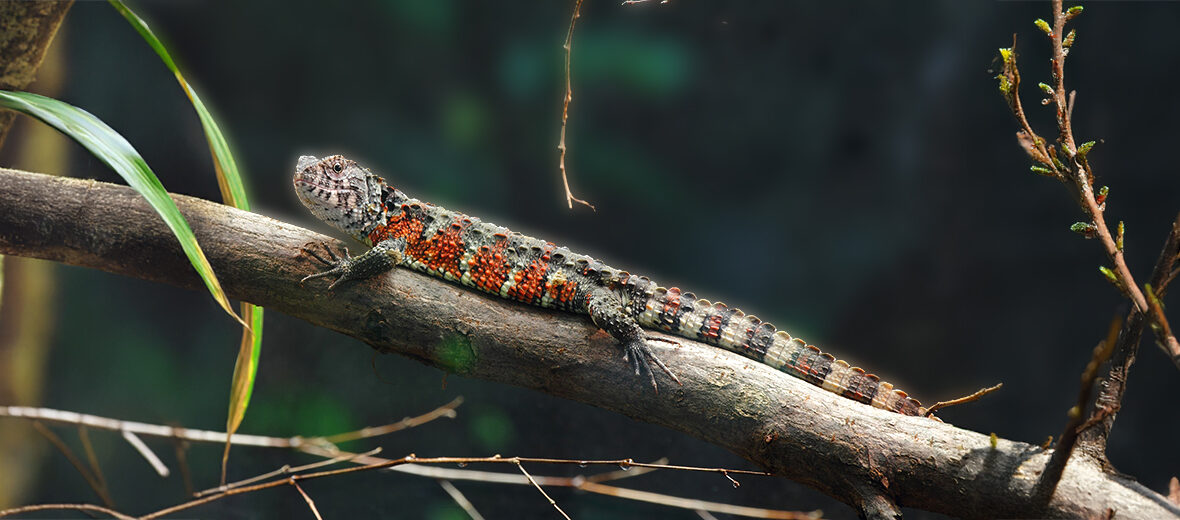
The Chinese crocodile lizard can only be found in the cooler forests in southeastern China and northeastern Vietnam. Unfortunately, these lizards face the threats of habitat loss and destruction at the hands of agriculture, logging, mining, and quarrying; roads and railroads, that divide their territory and can result in vehicle strike – being hit by vehicles; hunting; and trapping. They are listed as Endangered by the IUCN, and their population trend is decreasing.
First the Stats…
Scientific name: Shinisaurus crocodilurus
Weight: Up to 14.11 ounces
Length: Up to 18 inches
Lifespan: Up to 10 years
Now on to the Facts!
1.) They are the only living member of Shinisauria, a clade of lizards whose fossil records date back to the Early Cretaceous, over 120 million years ago.
2.) These lizards are sexually dimorphic in that males are larger and more colorful than females.
3.) Earthworms, red worms, spiders, katydids, cockroaches, crickets, shrimp, tadpoles, small fish, frogs, and other lizards are all on the menu.
4.) Crocodile lizards are territorial, so much so that they will attempt to make an entire pond or stream their own and defend it against other competitors.
5.) Gaping (opening their mouth wide to show their teeth) is used, in part, to ward off other males from their territory. They will also swing their long tail and lunge at other males.
But wait, there’s more on the Chinese crocodile lizard!
6.) Another peculiar behavior unique in some other lizard species is when they see a potential threat from another lizard they will do push-ups and bob their head in a circular motion. Much like bearded dragons.
7.) These critters are viviparous (give birth to live young, rather than laying eggs).
Did you know…?
Shinisaurus (literally translating to “Shin’s lizard”) honors the biologist Sin Shu-szi who originally described these lizards.
8.) Females undergo up to a 9 month gestation (pregnancy) that yields up to 12 offspring each season.
9.) Pre-copulation for the Chinese crocodile lizard typically starts with the adult male’s appearance changing to a more beautiful coloration. Adult males will then display courtship behaviors such as head-nodding and approaching the females. During copulation, the male typically bites the neck of the female and holds on until the act is completed.
10.) They prefer to dwell in cool, dense, monsoonal forest habitats near a body of water.
But wait, there’s still more on the Chinese crocodile lizard!
11.) There are 2 recognized subspecies: Shinisaurus crocodilurus crocodilurus (in China) and hinisaurus crocodilurus vietnamensis (in Vietnam).
12.) Recent studies have shown that these lizards are more closely related to monitor lizards and helodermatids (Gila monsters) than to Xenosaurus.
13.) Sadly, there are less than an estimated 1,000 wild individuals remaining, to date.
Now a Short Chinese Crocodile Lizard Video!
Be sure to share & comment below! Also, check out the Critter Science YouTube channel. Videos added regularly!
Want to suggest a critter for me to write about? Let me know here.
Some source material acquired from: Wikipedia & IUCN
Photo credit: spacebirdy




